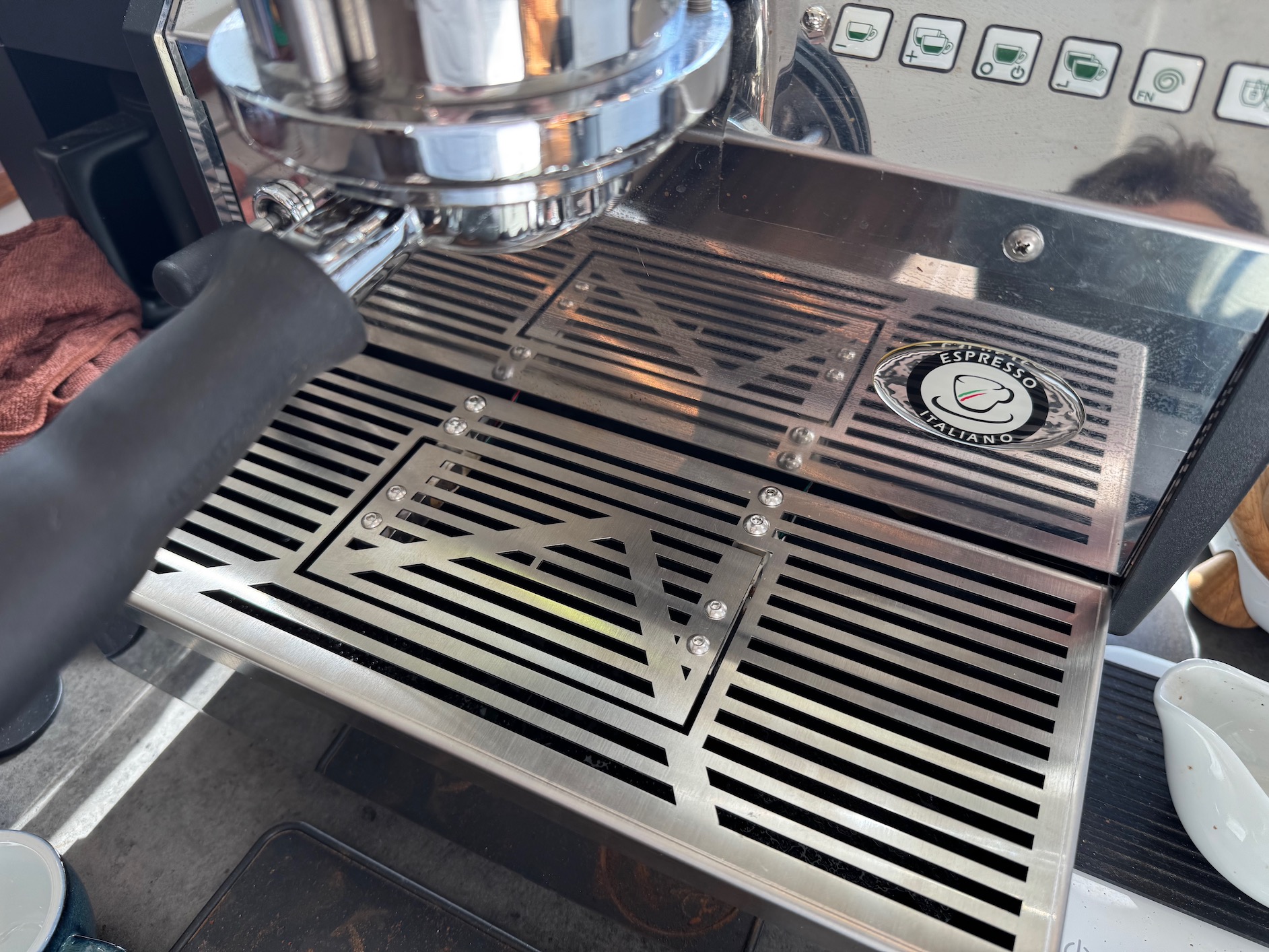2025-09-14: Findings on load cells
So I designed a GS3 drip tray grate with mounting points for load cells, and earlier this week I received it. It looks great (no pun intended), but it did became the proximal cause of me learning a thing or two about load cells.

I used to have a similar grate for the Bianca, and it worked pretty good. One of the main issues though was load cell cable routing, and on the Bianca, there are no good places to route them without making major modifications to they tray. On the GS3 though, because there are hidden outlets for the expansion valves, with a bit of wiggle room up into the machine, that gave me an idea.
I wanted to use magnetic connectors, to make it easy to remove the grate (and thus the drip tray). I had previously explored and validated this idea in the dev rig, where it is working fine. The magnetic connectors didn’t seem to add any noticable measurement noise or drift, and of course, the convenience is noticeable.
Said and done, I added magnetic connectors to two load cells, and put everything together. For the machine side, I had two wires sticking out from the machine into the drip tray. Not as elegant when the drip tray is off, but when it is on, it looks great, and the magnetic snap of re-attaching the grate is very satisfying.
However, using the scale fairly quickly started to reveal issues. The first shot generally worked well, but (presumably due to the proximity) after the three way solenoid has exhausted, I started to get serious drift and measuring errors. My working theory is that this is due to ingress of moisture into the magnetic connector, but of course, this could be ingress of moisture into the soldered joints or load cell. In the dev rig, the magnetic connector is far away from any moisture. Switching to the load cells I used in the Bianca (with the cables routed through a PTFE tube), I get entirely normal measurements, but it doesn’t offer the convenience of being able to easily remove the drip tray.
So, what’s the next step? As you might see in the video, there is a lot of slack in the cables. I have a theory that if I can move the connectors to the lip of the front fascia, that should reduce any water ingress. As such, I’ve ordered appropriate connectors for such a mounting. I’m also going to be waterproofing the connectors and cables more (sleeving the cables with a PTFE tube, using shrink tube around the load cell, and enclosing the soldered connections to the connector with hot glue). Hopefully this will minimize any problems, but as of now, time will tell.
With a volumetric machine, gravimetric measurements are less important than with a conventional machine, but gravimetrics are still useful to establish first-drop and to calibrate pulses-to-flow, so having gravimetrics is very much still on my radar.
